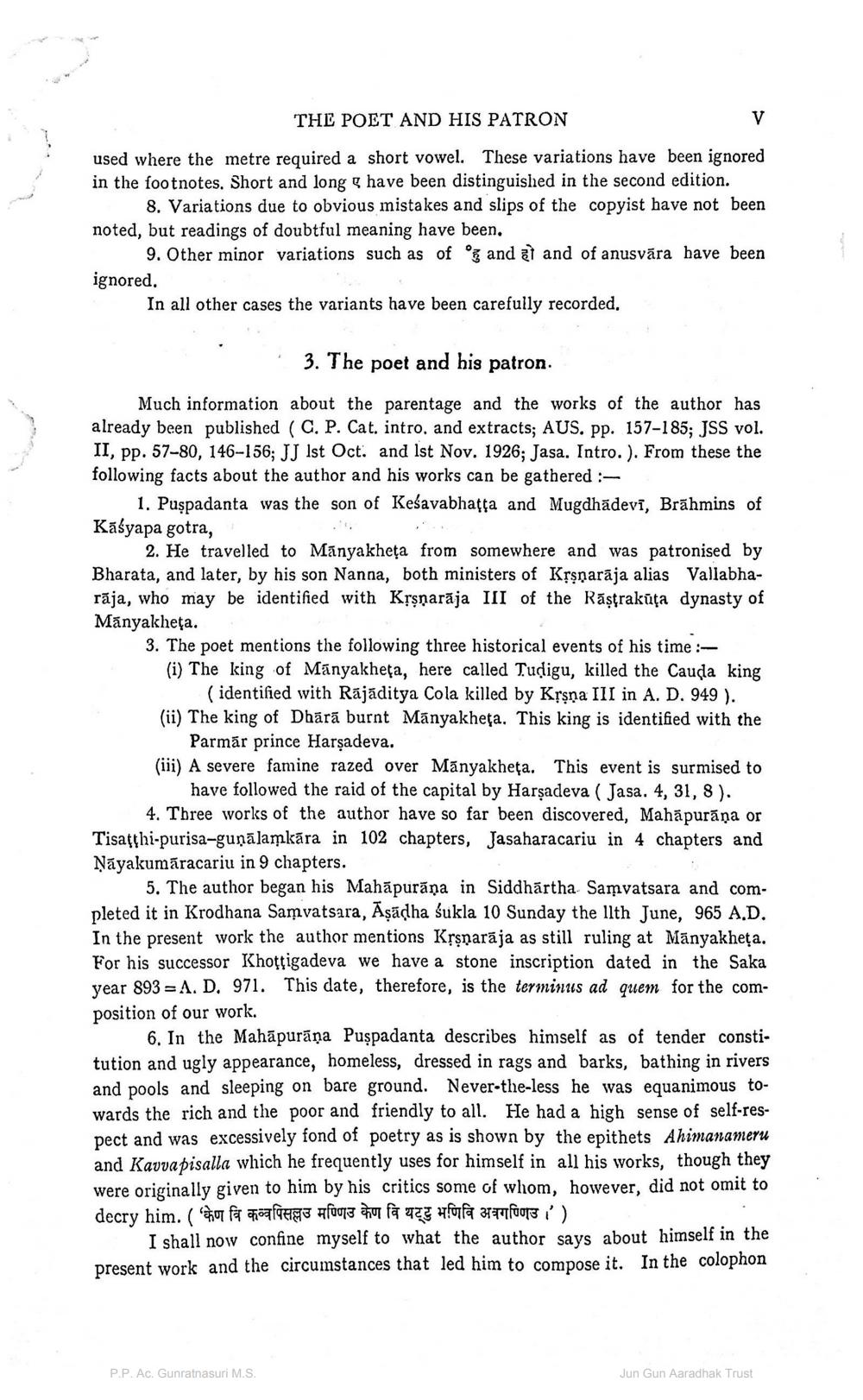________________ THE POET AND HIS PATRON used where the metre required a short vowel. These variations have been ignored in the footnotes. Short and long & have been distinguished in the second edition. 8. Variations due to obvious mistakes and slips of the copyist have not been noted, but readings of doubtful meaning have been. 9. Other minor variations such as of 'g and at and of anusvara have been ignored. In all other cases the variants have been carefully recorded. 2 T 3. The poet and his patron. Much information about the parentage and the works of the author has already been published ( C. P. Cat. intro, and extracts; AUS. pp. 157-185; JSS vol. II, pp. 57-80, 146-156; JJ Ist Oct. and 1st Nov. 1926; Jasa. Intro.). From these the following facts about the author and his works can be gathered : 1. Puspadanta was the son of Kesavabhatta and Mugdhadevi, Brahmins of Kasyapa gotra, 2. He travelled to Manyakheta from somewhere and was patronised by Bharata, and later, by his son Nanna, both ministers of Krsnaraja alias Vallabharaja, who may be identified with Krsnaraja III of the Rastrakuta dynasty of Manyakheta. 3. The poet mentions the following three historical events of his time :(i) The king of Manyakheta, here called Tudigu, killed the Cauda king (identified with Rajaditya Cola killed by Krsna III in A. D. 949). (ii) The king of Dhara burnt Manyakheta. This king is identified with the Parmar prince Harsadeva. (iii) A severe famine razed over Manyakheta. This event is surmised to have followed the raid of the capital by Harsadeva ( Jasa. 4, 31, 8). 4. Three works of the author have so far been discovered, Mahapurana or Tisatthi-purisa-gunalamkara in 102 chapters, Jasaharacariu in 4 chapters and Nayakumaracariu in 9 chapters. 5. The author began his Mahapurana in Siddhartha Samvatsara and completed it in Krodhana Samvatsara, Asadha sukla 10 Sunday the Ilth June, 965 A.D. In the present work the author mentions Klsnaraja as still ruling at Manyakheta. For his successor Khottigadeva we have a stone inscription dated in the Saka year 893 = A. D. 971. This date, therefore, is the terminus ad quem for the composition of our work. 6. In the Mahapurana Puspadanta describes himself as of tender constitution and ugly appearance, homeless, dressed in rags and barks, bathing in rivers and pools and sleeping on bare ground. Never-the-less he was equanimous towards the rich and the poor and friendly to all. He had a high sense of self-respect and was excessively fond of poetry as is shown by the epithets Ahimanameru and Kavva pisalla which he frequently uses for himself in all his works, though they were originally given to him by his critics some of whom, however, did not omit to decry him. (mot far foafrugs Afaqa tu fa ug uforfa Bramfors i') I shall now confine myself to what the author says about himself in the present work and the circumstances that led him to compose it. In the colophon P.P.AC. Gunratnasuri M.S. Jun Gun Aaradhak Trust




